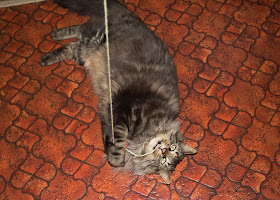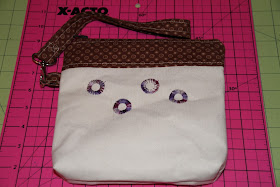I made this afghan for my niece for her wedding present. It is the same pattern I shared in January a year ago except the main color is blue instead of beige. You can find the instructions here. It took a few months to make, of course. I whipped up a few medallions each night and tossed them in a bin until I had a bunch then worked them together by working the final row. If I had had the time to sit down and crochet the whole afghan at once it wouldn't have taken so long but it was a squeeze it in during what free time I had kind of project.
The pop of color and hexagon shapes of the medallions just tickle my visual senses. Plus, it's warm and cozy and has a perfect weight to it.
She lives in the Pacific Northwest so a cozy afghan is a perfect gift. I lived in the Pacific Northwest for many years and cold is the main theme out there. Sure, it doesn't get nostril freezing shut, car tire thumping frozen cold. It's just always cold. A steady cold. Afghans and quilts are a normal sofa accessory there, summer or winter.
It turned out great. Just love it. The beige afghan is still the cat's favorite. When I bring it out he appears out of nowhere as if by magic and settles in on the afghan to snuggle with me. Since my niece has a cat, I am certain that at least someone in the household will fall in love with it.


















































